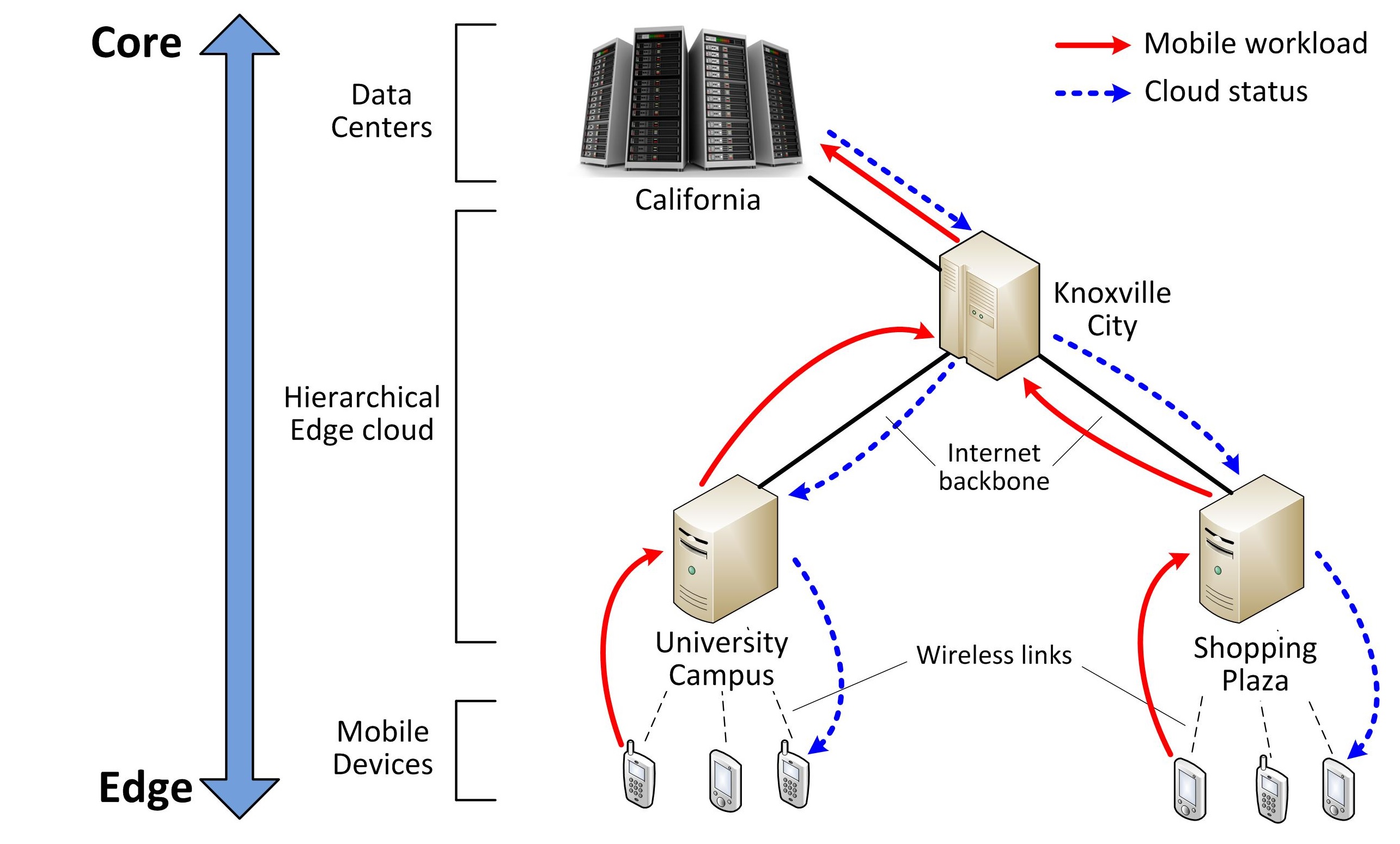One of the most important challenges in mobile computing is to address the contradiction between the increasing complexity of mobile applications and the limited local capabilities of mobile devices. A viable solution to this challenge is to leverage cloud computing and execute mobile applications remotely. Such remote execution benefits a large variety of mobile applications, ranging from voice control and gesture recognition with real-time processing of sensory data, to mobile gaming and video playback
with expensive multimedia computations.
Modern cloud computing services, such as Amazon EC2 and Microsoft Azure, are solely hosted by data centers and incapable of efficiently executing mobile applications due to the following reasons. First, mobile applications require immediate response, and hence suffer from the excessive network latency accessing the remote data centers. Second, data centers provide virtualized cloud resources as Virtual Machines (VMs), each of which serves an enterprise user with high volumes of workloads or responds to a type of web requests. As a result, data centers also handle each mobile application using a separate VM no matter how small its amount of workload is, but incur significant overhead for global VM provisioning and management due to the huge number of mobile applications using the cloud. Such overhead may even exceed the expense of mobile program execution itself and overload the data centers during the peak hours.
Therefore, the driving vision of this research is that an edge cloud, which is an intermediate cloud layer being deployed at the network edge, is indispensable to efficient remote execution of mobile programs. We consider the requirements of remote program execution in two aspects: i) application performance, and ii) execution expense, and design the edge cloud as a tree hierarchy of geo-distributed small-scale servers to satisfy these requirements through efficient utilization of cloud resources. On one hand, mobile workloads are flexibly distributed among different tiers of edge cloud servers and data centers, so as to efficiently serve the peak load through hierarchical load aggregation. On the other hand, the status of the cloud's resource and workload conditions is shared among data centers, edge cloud servers, and mobile devices, allowing appropriate resource allocation and workload placement.
the driving vision of this research is that an edge cloud, which is an intermediate cloud layer being deployed at the network edge, is indispensable to efficient remote execution of mobile programs. We consider the requirements of remote program execution in two aspects: i) application performance, and ii) execution expense, and design the edge cloud as a tree hierarchy of geo-distributed small-scale servers to satisfy these requirements through efficient utilization of cloud resources. On one hand, mobile workloads are flexibly distributed among different tiers of edge cloud servers and data centers, so as to efficiently serve the peak load through hierarchical load aggregation. On the other hand, the status of the cloud's resource and workload conditions is shared among data centers, edge cloud servers, and mobile devices, allowing appropriate resource allocation and workload placement.
Selected publications:
-
Interconnecting Heterogeneous Devices in the Personal Mobile Cloud [pdf]
Yong Li and Wei Gao, in Proceedings of the 36th IEEE Conference on Computer Communications (INFOCOM), 2017.
(Acceptance Ratio: 292/1395=20.9%) -
A Hierarchical Edge Cloud Architecture for Mobile Computing [pdf]
Liang Tong, Yong Li and Wei Gao, in Proceedings of the 35th IEEE Conference on Computer Communications (INFOCOM), 2016.
(Acceptance Ratio: 300/1644=18.25%) -
Application-Aware Traffic Scheduling for Workload Offloading in Mobile Clouds [pdf]
Liang Tong and Wei Gao, in Proceedings of the 35th IEEE Conference on Computer Communications (INFOCOM), 2016.
(Acceptance Ratio: 300/1644=18.25%)
Acknowledgement
This project is supported in part by the U.S. National Science Foundation (NSF) under the grant CNS-1527612 (project website). Any opinions, findings, and conclusions or recommendations expressed in this material are those of the author(s) and do not necessarily reflect the views of the NSF.